《INTERNATIONAL ADJUDICATION PROCEDURAL ASPECTS》
| 作者 | V.S.MANI 编者 |
|---|---|
| 出版 | MARTINUS NIJHOFF PUBLISHERS |
| 参考页数 | 456 |
| 出版时间 | 1980(求助前请核对) 目录预览 |
| ISBN号 | 无 — 求助条款 |
| PDF编号 | 813675808(仅供预览,未存储实际文件) |
| 求助格式 | 扫描PDF(若分多册发行,每次仅能受理1册) |
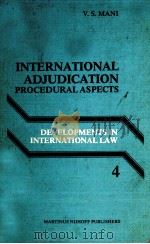
Ⅰ.INTRODUCTION1
1.General Doctrinal Observations1
2.Objective of the Study5
3.Scope of the Study6
4.Definitional Problems10
Ⅱ.PROCEDURAL NORMS AND FUNDAMENTAL PROCEDURAL RIGHTS12
1.Objectives13
2.Procedural Norms: From Municipal into International Law15
2.1.Audi Alteram Partem and Equality of Parties in Municipal Law15
2.2.Fundamental Procedural Norms as “General Principles of Law”19
2.3.Concern for Fundamental Procedural Norms in Interna- tional Law21
3.General Practice of International Tribunals21
4.Fundamental Procedural Rights25
4.1 Right to Composition of Tribunal25
4.2.Right to be Heard30
4.3.Right to due Deliberation by a Duly Constituted Tribunal31
4.4.Right to a Reasoned Judgment33
4.5.Right to a Tribunal Free from Corruption35
4.6.Right to Proceedings Free from Fraud35
5.Limits of Procedural Rights36
6.Fundamental Procedural Norms in Advisory Proceedings42
7.Effect of Non-observance of Fundamental Procedural Rights48
Ⅲ.INITIATION OF PROCEEDINGS54
1.Special Agreement or Compromis54
2.Representation of Parties before the Tribunal58
2.1.Right to Appoint Representatives58
2.2.Qualifications of Representatives60
2.3.Appointment of Representatives63
2.4.Role of Agent, Counsel and Advocates67
2.5.Legal Effects of Acts of Representatives69
2.6.Representation of ‘Parties’ in Advisory Proceedings72
3.Formal Institution of Proceedings73
3.1.When Are Proceedings said to be Instituted?73
3.2.L’Acte Introductif77
3.3.Contents of L’Acte Introductif80
3.3.1.General Contentious Proceedings80
3.3.2.Other Proceedings83
3.4.Effects of L’Acte Introductif88
3.5.Notification or Service of Notice90
4.Preliminary Measures92
4.1.Preliminary Consultation with Parties92
4.2.Time Limits93
4.2.1.Time-limits Fixed by Special Agreement95
4.2.2.Considerations for Granting Extension to Time-limits96
4.2.3.Computation of Time-limits99
4.2.4.Effect of Non-observance of Time-limits100
Ⅳ.WRITTEN PROCEEDINGS103
1.Object of Written Proceedings103
2.Simultaneous versus Successive Presentation of Pleadings104
3.Number of Pleadings110
4.Form and Content of Pleadings112
4.1.Terminology113
4.2.General Characteristics113
4.3.Memorial116
4.4.Counter-Memorial119
4.5.Reply121
4.6.Rejoinder122
4.7.Pleadings in Advisory Proceedings122
4.8.Pleadings in Other Proceedings123
5.Dilatory Pleas123
5.1.The Concept of Dilatory Pleas in International Procedure123
5.2.Scope of Dilatory Pleas in International Arbitration125
5.3.Practice and Procedure of the International Court127
5.3.1.Contentious Cases127
5.3.2.Advisory Proceedings131
6.Ancillary Claims133
7.Amendment of Pleadings137
8.Submissions or Conclusions139
9.Joinder, Separation and Regrouping of Claims144
10.Problem of Publicity146
11.Problem of Language153
11.1.The Problem in Arbitration153
11.2.The Problem before the International Court155
12.Effect of Pleadings157
Ⅴ.ORAL PROCEEDINGS162
1.Objectives162
2.Resort to the Faculty of Oral Proceedings164
2.1.Absence of Compromis Provision164
2.2 Facultative Nature of Oral Proceedings165
3.When Does Hearing Commence?166
3.1.Closure of Pleadings166
3.2.Preliminary Hearing168
3.3.Fixing of the Date of Commencement of Hearing170
3.4.Postponement of Hearing171
4.Order of Oral Statements172
4.1.Arbitral Practice172
4.2.Practice of International Court173
4.2.1.Contentious Cases173
4.2.2.Advisory Proceedings174
5.Permissible Number of Oral Statements176
6.Length of Oral Arguments178
7.Tribunal Participation in Hearing179
7.1.Method and Objective179
7.2.Practice179
7.3.Juridical Character of Tribunal Participation182
8.Oral Interpretation183
Ⅵ.PRESENTATION OF EVIDENCE187
1.Objectives187
2.Definition of Evidence189
3.General Operational Problems190
4.Flexibility of Law of Evidence192
4.1.Absence of Diverse Schools of Thought on the Law of Evidence192
4.2.Non-Technicality as a Procedural Principle of Evidence193
4.3.Influence of Municipal Legal Systems on Law of Evidence in International Procedure195
5.Obligation of Parties to Present Evidence198
5.1.General Obligation of Parties198
5.2.Notice of Evidence201
5.3.Burden of Proof202
5.4.Presumptions207
5.5.Judicial Notice209
5.6.Tribunal’s Powers to Procure Evidence211
5.6.1.General Powers211
5.6.2.Visit on the Spot213
6.Modes of Proof215
6.1.General Considerations215
6.1.1.Contemporaneous Evidence215
6.1.2.Absence of ‘Best Evidence’ Rule216
6.1.3.Discovery and Inspection216
6.1.4.Authentication of Documents219
6.1.5.Common Modes of Proof220
6.2.Documentary Evidence221
6.2.1.General221
6.2.2.Travaux Preparatoires221
6.2.3.Maps223
6.3.Affidavits225
6.4.Oral Evidence227
6.4.1.Witness Testimony229
6.4.2.Expert Evidence234
6.5.Evidence of Public International Organizations238
7.Time for Presentation of Evidence238
7.1.Presentation during Written Proceedings239
7.2.Presentation after Closure of Pleadings and/during Oral Proceed- ings239
7.2.1.Doctrinal Position240
7.2.2.Procedure for Presentation of Additional Documentary Evidence242
7.2.3.Order of Presentation of Evidence during Oral Proceed- ings245
7.2.4.Closure of Hearing245
Ⅶ.INTERVENTION248
1.Objective248
2.Evolution of Intervention in International Procedure249
3.Types of Intervention253
3.1.Intervention by Leave of Tribunal254
3.1.1.International Court254
3.1.2.Other Tribunals257
3.2.Intervention as of Right258
4.Scope of Admissible Intervention before International Court259
5.Procedure for Intervention before International Court261
5.1.Notification of Principal Proceedings261
5.2.Special Notification under Article 63 of the Statute of the Inter- national Court262
5.3.Document Instituting Intervention Proceedings263
5.3.1.Mixed Arbitral Tribunals263
5.3.2.The Court of Justice of the European Communities265
5.3.3.The International Court265
5.4.Timing of Intervention266
5.5.Admissibility Procedure269
5.5.1.Notification of Intervention to Parties269
5.5.2.Further Proceedings on Admissibility270
5.5.3.Decision on Admissibility271
5.6.Post-Admissibility Procedure271
6.Effect of Intervention272
6.1.Effect on Procedural Rights273
6.2.General Substantive Effect274
Ⅷ.INTERIM MEASURES OF PROTECTION276
1.Introduction276
2.Historical Perspective277
3.Objectives of Interim Measures280
4.Nature of Interim Measures Proceeding282
4.1.Incidental Jurisdiction283
4.2.Provisional Nature283
4.3.As a Separate Proceedings284
4.4.Interim Measures Order and ‘Interim’ or Phasal Judgment284
4.5.Non-Applicability of Res Judicata285
5.Inherent Power of the Tribunal286
6.Scope of the Power of International Court to Indicate Interim Measures289
6.1.The Statute and Rules of Court289
6.2.Operative Conditions292
6.2.1.General Conditions292
6.2.2.Power to Indicate Interim Measures in the Face of Chal- lenge to Substantive Jurisdiction298
7.Procedural Practice of International Court304
7.1.General Procedure304
7.2.Composition of Court305
7.3.Right to be Heard306
7.4.Extension of Time-limits307
7.5.Settlement and Discontinuance307
8.Effects of Non-Compliance with Interim Measures308
1980《INTERNATIONAL ADJUDICATION PROCEDURAL ASPECTS》由于是年代较久的资料都绝版了,几乎不可能购买到实物。如果大家为了学习确实需要,可向博主求助其电子版PDF文件(由V.S.MANI 1980 MARTINUS NIJHOFF PUBLISHERS 出版的版本) 。对合法合规的求助,我会当即受理并将下载地址发送给你。
高度相关资料
-

- Construction Adjudication
- 1999 LLP
-

- PROCEDURAL ELEMENTS FOR COMPUTER GRAPHICS
- MCGRAW-HILL BOOK COMPANY
-

- INTERNATIONAL DISPUTES THE POLITICAL ASPECTS
- 1972 EUROPA PUBLICATIONS
-

- INTERNATIONAL DISPUTES THE POLITICAL ASPECTS
- 1971 EUROPA PUBLICATIONS
-

- ASPECTS OF INTERNATIONAL CO-OPERATION IN AIR TRAFFIC MANAGEMENT
- 1998 MARTINUS NIJHOFF PUBLISHERS
-

- ABUSE OF PROCEDURAL RIGHTS:COMPARATIVE STANDARDS OF PROCEDURAL FAIRNESS
- 1999 KLUWER LAW INTERNATIONAL
-
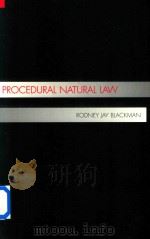
- Procedural Natural Law
- 1999 Carolina Academic Press
-

- LEGAL ASPECTS OF INTERNATIONAL TRADE
- 1999 UNITED NATIONS
-
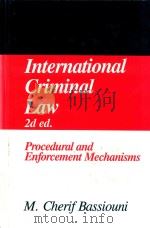
- International Criminal Law Second Edition Volume II Procedural and Enforcement Mechanisms
- 1999 Transnational Publishers
-

- A CRITIQUE OF ADJUDICATION FIN DE SIECLE
- 1997 HARVARD UNIVERSITY PRESS
-
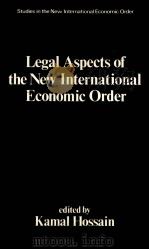
- Legal aspects of the new international economic order
- 1980 F. Pinter : Nichols Pub. Co.
-

- SCAPEGOATS FOR A PROFESSION:UNCOVERING PROCEDURAL INJUSTICE
- 1998 HARWOOD ACADEMIC PUBLISHERS
-
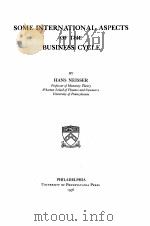
- SOME INTERNATIONAL ASPECTS OF THE BUSINESS CYCLE
- 1936 UNIVERSITY OF PENNSYLVANIA PRESS
-

- ASPECTS OF INTERNATIONAL SOCIALISM 1871-1914
- 1986 CAMBRIDGE UNIVERSITY PRESS
提示:百度云已更名为百度网盘(百度盘),天翼云盘、微盘下载地址……暂未提供。➥ PDF文字可复制化或转WORD
